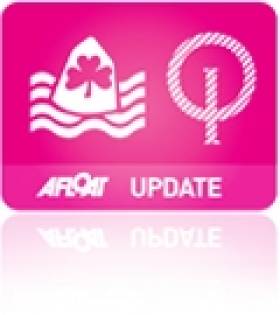Displaying items by tag: Dunmore East
Crystal City Cruise Callers
Another cruise caller, Crystal Cruises 51,044grt Crystal Symphony has a considerably larger capacity of over 900 passengers. The vessel had departed Dublin several days previously and also visited the south-east, to anchor off Dunmore East.
Passengers disembarked at the fishing port using the vessel's tenders and were bused to the various attractions of the city including the recently re-opened House of Waterford Crystal plant and visitor showrooms.
Cruiseships Bound for Sunny South-East
Azamara Journey, a cruiseship built a decade ago and weighing 30,277 gross tonnes (gt) is due tomorrow (21 August) to anchor off Dunmore East. The vessel will use tender-boats to transfer passengers to the fishing port which lies on the southern approches of the Waterford estuary leading into the River Suir .
Several days after Azamara Journey's call, a further three cruise-ships will be touring the south-east. On 2 September the Crystal Symphony (51,044gt) sails overnight from Holyhead and is scheduled to take anchorage off Dunmore East and two days later a similar call is expected by the Silver Whisper. The 2001-built vessel is operated by the six-star rated Silversea Cruises.
La Diamant is due on 5 September to berth at Belview, the main port of Waterford and then is bound for the Isles of Scilly. La Diamant is owned by the only French cruise operator, Compagnie du Ponant based in Marseilles. La Diamant (8,238gt) has 172 passengers and 144 crew.
The cruise-operator specialises in offering a fleet of small bijou ships which include sail-assisted vessels. Compagnie du Ponant are a subsidiary of CMA-CGM Group, one of the world's largest container shipping companies.
Another Silversea Cruises fleetmate, Silver Cloud is due to dock on 8 September at Belview or upstream in the city-centre quays, in the heart of the newly rejuvenated 'crystal' city. Silver Cloud is on a cruise from Iceland and after the Irish call, the vessel heads for Fowey with the cruise culminating in the Pool of London.
The location of where vessels berth throughout the estuary is subject to the draft of the ship, weather conditions, tides and occupancy status of berths.
Royal Cork 1, 2 and 3 at Optimist Nationals
Two more races were sailed today at the Optimist National Championships in Waterford Harbour Sailing Club but a third race did not happen due to combination of strong winds and poor visibility. Royal Cork Yacht Club are dominating the top positions in this event so far
Provisional Results after 7 races:
Seniors: 1st Peter McCann RCYC, 2nd Patrick Crosbie RCYC.3rd John Durcan RCYC.
Juniors: 1st Daire Cournane RCYC, 2nd Daniel Whiteley, PDC, UK. 3rd Daniel Labrouche UK.
Irish Oppys Head for Dunmore East
The Irish Optimist Irish National Championships take place next week at Dunmore East in Co. Waterford from 17th - 21st August. Below at the launch of the event at Waterford Harbour Sailing Club were (left to right) Anna Potterton (WHSC) Mark Daly (Chairman Dunmore East Tourism) Siobhan Gallagher from 3, Andrew Torrie (Commondore WHSC) and Peter Queally (WHSC)
































































